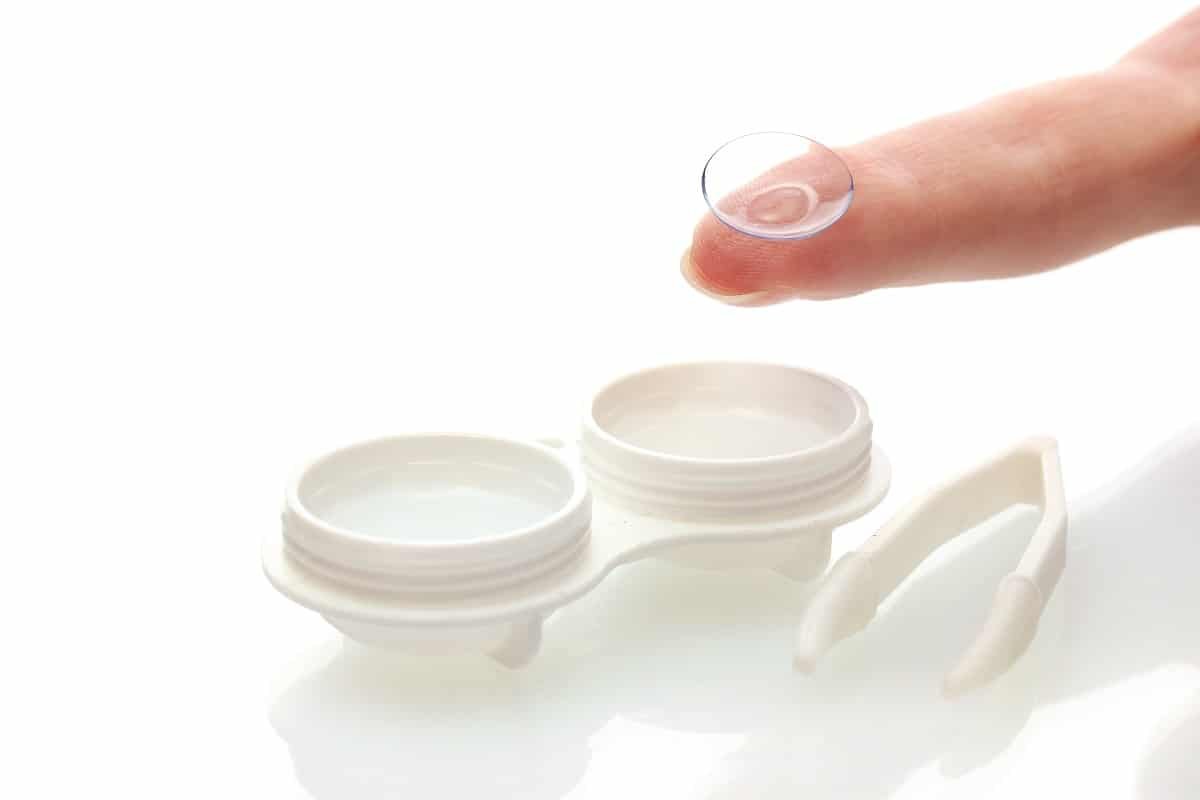Contact lenses offer a convenient and versatile alternative to traditional eyeglasses, providing wearers with clear vision and freedom from bulky frames. Whether you're a seasoned contact lens wearer or considering making the switch from glasses, understanding the benefits, usage instructions, and key differences between contact lenses and glasses is essential for achieving optimal vision and eye health. Let's delve into the world of contact lenses and explore everything you need to know to make informed decisions about your eye care:
Contact Lenses vs Glasses: Choosing the Right Vision Correction Option
- Vision Correction: Contact lenses and glasses both serve the primary purpose of correcting refractive errors such as nearsightedness, farsightedness, and astigmatism. However, contact lenses sit directly on the eye's surface, providing a wider field of vision and more natural visual experience compared to glasses, which may have peripheral distortion.
- Aesthetics: Contact lenses offer a more natural appearance, allowing wearers to showcase their facial features without the obstruction of frames. This can be particularly appealing for individuals who prefer a more subtle or discreet vision correction option.
- Lifestyle Considerations: Contact lenses are ideal for active lifestyles, sports enthusiasts, and individuals with demanding professions where glasses may be impractical or cumbersome. They provide freedom of movement and eliminate the risk of glasses slipping or fogging up during physical activities.
Overview on Contact Lenses and the Benefits: Enhancing Vision and Lifestyle
- Types of Contact Lenses: Contact lenses come in various types to accommodate different vision needs and preferences, including soft contact lenses, rigid gas permeable (RGP) lenses, toric lenses for astigmatism, multifocal lenses for presbyopia, and specialty lenses for conditions like keratoconus.
- Benefits of Contact Lenses: Contact lenses offer several advantages over glasses, including improved peripheral vision, freedom from lens fogging and reflections, no visual obstruction from frames, and the ability to wear non-prescription sunglasses and protective eyewear without interference.
- Comfort and Convenience: Modern contact lenses are designed for maximum comfort and breathability, allowing oxygen to reach the cornea and maintaining hydration for all-day wear. Disposable contact lenses offer added convenience, eliminating the need for cleaning and maintenance.
How to Use Contact Lens - Instructions: Best Practices for Safe and Effective Wear
- Consultation with an Eye Care Professional: Before wearing contact lenses, schedule a comprehensive eye exam with an optometrist or ophthalmologist to determine your suitability for contact lens wear and receive a prescription tailored to your specific vision needs.
- Proper Lens Hygiene: Always wash and dry your hands thoroughly before handling contact lenses to reduce the risk of infection. Follow your eye care professional's recommendations for lens care, including cleaning, disinfecting, and storage.
- Insertion and Removal Technique: Practice proper insertion and removal techniques to avoid damaging your lenses or injuring your eyes. Use your dominant hand to hold the lens, gently placing it on the tip of your index finger, and use your other hand to hold your eyelids open while inserting the lens onto your eye. To remove the lens, wash your hands, look upwards, and gently pinch the lens between your thumb and index finger, then carefully slide it out of your eye.
- Adherence to Replacement Schedule: Follow the prescribed replacement schedule for your contact lenses, whether they are daily disposable, bi-weekly, monthly, or extended wear lenses. Avoid wearing lenses beyond their recommended wear period to prevent discomfort, infection, and complications.
- Regular Eye Exams: Schedule routine follow-up appointments with your eye care professional to monitor your eye health, assess the fit and condition of your contact lenses, and update your prescription as needed.
Additional Tips and Information
- Emergency Preparedness: Be prepared for unexpected situations by carrying a spare pair of contact lenses, a lens case, and lubricating eye drops with you at all times.
- Avoidance of Water Exposure: Avoid swimming, showering, or engaging in water-related activities while wearing contact lenses to reduce the risk of eye infections caused by waterborne pathogens.
- Monitoring for Signs of Eye Irritation or Infection: Pay attention to any symptoms of eye irritation, redness, pain, or discharge, which may indicate an eye infection or allergic reaction. Remove your contact lenses immediately and consult your eye care professional if you experience any discomfort or changes in vision.
